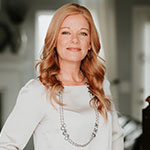No Records Found
Sorry, no records were found. Please adjust your search criteria and try again.
Google Map Not Loaded
Sorry, unable to load Google Maps API.
- Jill
- King
- No
- 2093 Woodsedge Ct.
Hebron
Kentucky
41048
United States - Foundation Communication

Hebron
Kentucky
41048
United States
I always liken therapy for Childhood Apraxia of Speech to other motor milestones in a child's life. The more we repeat a motion with the muscles of our bodies, the more easily we are able to execute those movements. This is called motor learning. Speech therapy for apraxia is literally exercise for speech. My approach to therapy begins with building a trust with both parent and child. I pride myself on being able to build rapport rather quickly so that children are motivated and attentive when I work with them. I always tell the children what we are working on & give them a little pre-practice to make sure they are knowledgeable, comfortable, and ready! My goal is always as much practice as is possible, preferably in shorter periods of time every day to aid in retention and generalization. I work on several objectives for a child at the same time, which may initially take longer, but will yield better results. I will provide any support necessary for a child to achieve success in producing any sound, sequence or word including visual, verbal, and/or tactile stimuli. I have actually created my own visual set of signs that includes a combination of manual letter signs with visual representations of phonation that has worked incredibly well with my kids.
Parental involvement is vital in the process of intervention for a child with apraxia of speech. I consider them my partner, along with their child, on this journey. They know their child best, which can help me learn about them, their likes/dislikes, their motivations, and their behaviors. Parent are invited into my therapy room to participate in therapy. I train them not only on my techniques, but also for the reasons behind them. Short, frequent practice throughout the week is crucial for success, so I rely on parents to work with their child at home. I provide homework and instruction so that they can do this. They also have the opportunity to provide functional practice in the child's everyday environment, that I, as a clinician, don't have. Getting a parent’s feedback from time between sessions allows me to better serve their child.
When one of my children has severe limitations on their ability to communicate and have very reduced intelligibility, particularly when there is a high degree of frustration, I incorporate augmentative communication because I find it supports and promotes more verbal attempts while allowing the child to communicate wants and needs. I almost always use manual sign (ASL or a set of signs that the child & I "create" together!). I use communication books for children who may have decreased cognitive and/or motor abilities and/or where resources prevent high-tech devices. In this world of technology, particularly with user-friendly tablets, I have had a lot of success. These are very portable so a child can use them in therapy, at home, and at school. These devices are relatively affordable and easy to use. I have primarily used Touch Chat and ProLoquo2Go.




